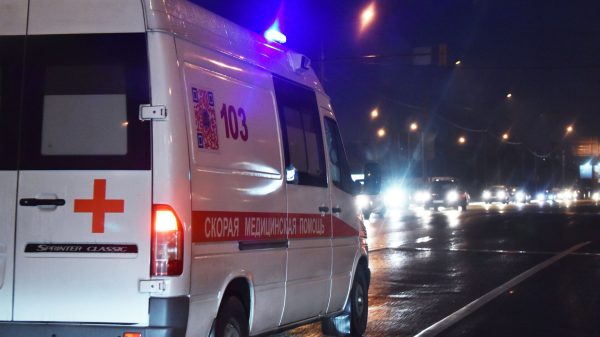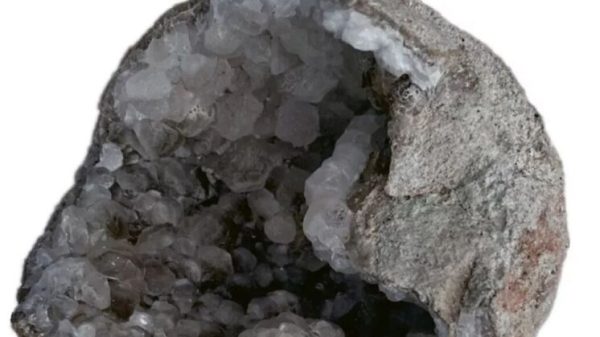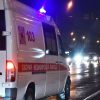“The cause of this disease is currently unknown.”
Inflammatory bowel disease (IBD) is becoming increasingly common around the world. They are even called a new threat to consumer society. The reason for their appearance is still unknown to science, just as it is not clear why their prevalence is rapidly growing. At the same time, IBD is diagnosed much more often in residents of large cities — and scientists still have no explanation for this fact either.
One of the IBDs is Crohn's disease. How is it dangerous? How to diagnose it? Are there ways to treat it? The head of the Department of Abdominal Surgery and Oncology II (coloproctology and urogynecology) of the Russian Scientific Center for Surgery named after. acad. B.V.Petrovsky Arkady Bejanyan.

— Behind this name lies a chronic inflammatory disease that can make itself felt in any part of the digestive system. And it, as we know, starts from the mouth and ends with the anus. This fact alone tells us about the wide range of manifestations of the disease, the difficulties of diagnosis, and the wide variability of treatment regimens. Currently, the cause of this disease is unknown. It can manifest itself with symptoms such as diarrhea or constipation, changes in appetite and weight loss, the appearance of blood in the stool, and an ulcerative process may begin, the formation of abscesses and fistulas. Crohn's disease increases the risk of developing bowel cancer. There may also be nonspecific manifestations: joint pain, complaints about the condition of the skin and eyes. Therefore, any doctor will confirm: it is important not to delay going to a specialist if any of these symptoms or a combination of them occur.
— Treatment may include the use of anti-inflammatory drugs, immunomodulators, and antibiotics. But if necessary, surgical interventions are required. Surgeries are resorted to, for example, in the formation of abscesses (these are purulent accumulations), fistulas (abnormal channels appear between different parts of the intestine or between the intestine and other organs, they are also called pathological passages).
< p>— Treatment of fistulas in Crohn's disease usually includes a combination of medications and, in some cases, surgery. Treatment may vary depending on the severity of symptoms, characteristics of the fistula, and the patient's general condition. Classic treatment tactics include anti-inflammatory drugs, corticosteroids, immunomodulators, and antibiotics. And if drug treatment does not lead to improvement or if there are complex fistulas, surgery may be required to remove the fistula, resect the affected areas of the intestine, and sometimes create a stoma (an artificial opening for the removal of feces).
In general, it should be noted that the formation of a fistula significantly affects the patient’s lifestyle and quality of life. For example, perianal fistulas or anal fistulas form in the area around the anus (anus) and can cause various problems. The patient experiences pain and discomfort. There may be discharge from the holes in the skin, and an unpleasant odor often appears. Perianal fistula is a source of repeated infection. Since defecation is painful, the overall nutritional system is disrupted. A person is forced to change his usual lifestyle, give up activities, the volume of communication is often reduced and the general psychological state worsens.
— Maybe. Today, a number of diseases that significantly reduce the quality of life can be treated using a therapeutic drug from the patient’s own adipose tissue. We are conducting clinical studies, the purpose of which is to develop the method, as well as the development of domestic medical products in order to widely apply this method throughout the country. We are planning to conduct 4 clinical studies: 3 in traumatology and orthopedics and 1 in coloproctology. We are talking about such diagnoses as arthrosis of the knee joint, fractures with delayed callus formation and the risk of pseudarthrosis, aseptic necrosis of the femoral head and complication of Crohn's disease in the form of perianal fistulas. The essence of the method is this. Adipose tissue is taken from a person, most often from the front wall of the abdomen. Then, in a special laboratory under sterile conditions, specialists break down this adipose tissue using enzymes, removing cells containing oil (fat itself, triglycerides) and intercellular fibers. What remains is the most valuable thing — the stromal-vascular fraction of adipose tissue cells, which is diluted with saline to the required concentration and administered to the same patient as a therapeutic agent that triggers tissue regeneration.
— The method is minimally invasive, and since the cell suspension is prepared from its own fatty tissue, the likelihood of rejection is reduced to zero. We expect that as a result the patient will experience stimulation of tissue regeneration and long-term remission.
Crohn's disease continues to be the focus of attention of scientists; it is important to establish its nature and improve treatment tactics. I can say that this diagnosis is one of those arguments so that patients do not ignore alarming symptoms, do not rely on traditional medicine, but seek help from a doctor. Detection of the disease in the early stages can significantly alleviate its course. And if the diagnosis is not confirmed, the doctor will find the true cause of the symptoms, which will also give a better prognosis for cure.
Crohn's disease is a chronic inflammatory disease that mainly affects the gastrointestinal tract (Gastrointestinal tract). Although any part of the gastrointestinal tract from the mouth to the anal canal (back passage) can be involved, the end part of the small intestine (ileum) and/or large intestine (colon and rectum) is most often affected. Crohn's disease can affect any part of the digestive tract, and symptoms of the disease can vary greatly from patient to patient. The most common symptoms are: cramping, abdominal pain, diarrhea (diarrhea) mixed with blood and mucus, fever, weight loss and bloating. However, not all patients experience all of these symptoms; some experience none of them. Other symptoms may include anal pain or discharge, skin lesions, rectal abscess, anal fissure, and joint pain (arthritis).






















































Свежие комментарии